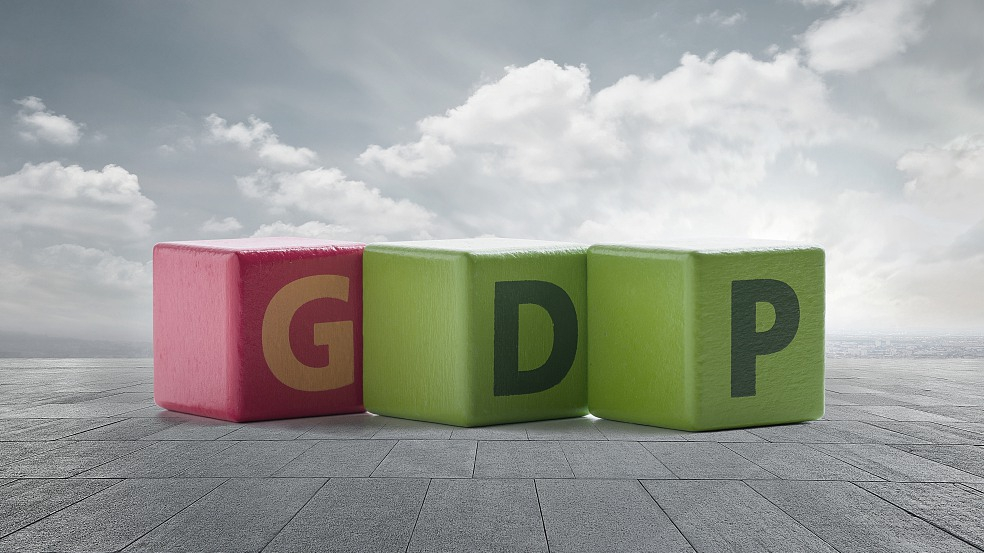
Opinion
15:52, 07-Mar-2019
Which indicator best reflects China's economic reality?
Ken Moak

Editor's note: Ken Moak, who taught economic theory, public policy and globalization at the university level for 33 years, is the co-author of a book titled "China's Economic Rise and Its Global Impact" in 2015. The article reflects the author's opinion, and not necessarily the views of CGTN.
While gross domestic product (GDP), the total value of all final goods and services produced in the economy in a given period of time, is not an accurate measurement of a country's economic performance, it is still relied on to construct indicators. The United Nations Human Development Index (HDI) is an example. The HDI incorporates living standard (GDP per person), years of education, and life expectancy in its calculation.
The GDP is also the source of data for other indices of the national accounts, from gross national product to personal income, to measure a country's economic health or performance. Without GDP, it would be difficult, if not impossible, to capture a realistic picture of a country's economic well-being because the statistic is formed on the basis of the values of economy's major sectors: consumption, investment, government expenditure and net exports (exports-imports).
It is true that GDP excludes non-quantifiable items such as quality of life, underground economic activities, etc. But these items are not only difficult to calculate (for lack of reliable data), the valuation may also be different from one person to another because of differences in lifestyle. Any index using “subjective” numbers would be a "guesstimate" at best.

VCG Photo
VCG Photo
To that end, GDP remains an important and relevant index in measuring a country's economic well-being. However, meaningful measurement and comparison between periods require "comparing apples to apples" data. In doing so, economists apply per capita real GDP, an index reflecting the value of goods and services a person enjoys in a given period.
Per capita real GDP is first calculated by dividing money or nominal GDP by the Implicit Price Index (GDP deflator) which measures price changes of goods and services over time. Per capita real GDP is simply real GDP divided by the population.
Since the country embarking on economic reforms and opening-up to the world 40 years ago, China has transformed its economy and society beyond recognition. In 1978, per capita real GDP was 156.4 U.S. dollars, according to the World Bank. That figure jumped to almost 10,000 U.S. dollars in 2018 in nominal exchange terms and over 17,000 U.S. dollars in PPP.
Admittedly, the yuan was able to buy much more in 1978 than in 2018, but the enormous increase in per capita real GDP explains the population has enjoyed a significant improvement in living standards: buying more goods and services, living longer, receiving more years of education, etc. For example, China's life expectancy was 66 years in 1978, but rose to over 76 years in 2018, according to the United Nations Development Program.
Which value should be used: exchange rate GDP or PPP GDP?
Since prices of goods and services vary from one country to another, purchasing power parity (PPP), which compares the purchasing power of the U.S. dollar in America and China (or any other country), might be a more accurate measurement of a country's economic achievement or performance. Price comparison studies have shown that a U.S. dollar can buy more in China than in the United States.

VCG Photo
VCG Photo
China's real exchange rate measured GDP was about 13.28 trillion U.S. dollars, but its PPP GDP was over 25 trillion US dollars in 2018. That year's per capita GDP would be approximately 10,000 U.S. dollars, suggesting China is poorer compared to the U.S.' over 55,000 U.S. dollars.
When using PPP though, China's per person real GDP jumps to over 17,000 U.S. dollars. This number also suggests China is on track to become a "moderately prosperous nation" by 2020 if real GDP growth meets the target of between 6 percent and 6.5 percent in 2019 and beyond.
"Comparing apples to apples" approach is, in fact, the reason why supranational institutions such as the International Monetary Fund and the United Nations are using PPP real GDP per person to compare economic performances and sizes between nations.
Further, the U.S. Central Intelligence Agency (CIA) argues that PPP measurement more accurately reflects the value of China's economic output. One reason is the CIA claims the value of the yuan is not determined by market forces, but policy-driven, implying the currency is artificially undervalued. Whether the CIA accusation is true depends on one's perspective, but it is true that PPP real GDP more accurately measures China's economic performance, influence, and size.
Real GDP is not a perfect index in measuring an economy's economic well-being, but it offers "hard data" for the construction of other indices in the national accounts. Indeed, it reflects China's economic performance as accurately as any index could. Although the Chinese economy is slowing down, per capita real GDP still rises, suggesting the economy remains robust and that people's livelihood will continue to improve.
(If you want to contribute and have specific expertise, please contact us opinions@cgtn.com.)

SITEMAP
Copyright © 2018 CGTN. Beijing ICP prepared NO.16065310-3
Copyright © 2018 CGTN. Beijing ICP prepared NO.16065310-3